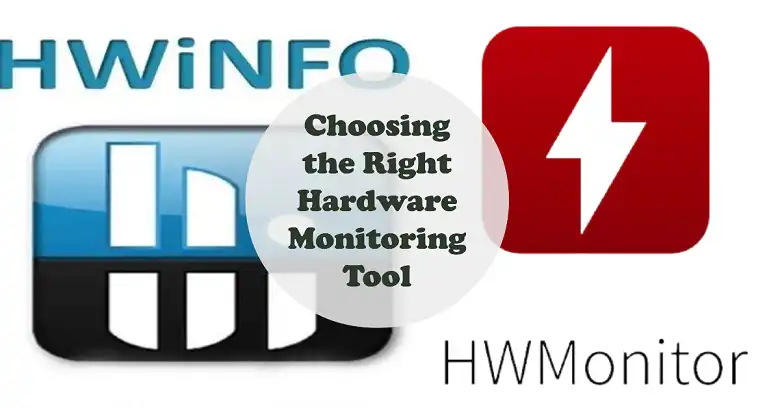HWInfo vs HWMonitor: Which Hardware Monitoring Tool is Right for You?

When it comes to monitoring your system’s hardware performance, two popular tools often come up in discussions: HWInfo and HWMonitor. Both offer robust capabilities, but which one is better for your needs? In short, HWInfo is ideal for power users and professionals looking for detailed, comprehensive system information, while HWMonitor is a simpler, more lightweight option that’s perfect for beginners or casual users. This article dives deep into each tool’s features, strengths, weaknesses, and performance impacts, helping you decide which one suits you best.
What Are Hardware Monitoring Tools and Why Are They Important?
Hardware monitoring tools like HWInfo and HWMonitor play a crucial role in maintaining system stability and optimizing performance. They help monitor critical parameters such as CPU and GPU temperatures, fan speeds, voltages, and system loads, preventing overheating and hardware damage. This is especially useful for gamers, overclockers, and professionals running high-performance applications. By providing real-time data, these tools allow users to detect potential issues early and fine-tune their system configurations.
HWInfo: A Comprehensive Hardware Monitoring Solution
Core Features of HWInfo
HWInfo is known for its exhaustive feature set, covering nearly every component in a PC. It provides detailed information on CPU, GPU, RAM, storage devices, network adapters, and motherboard sensors. This tool offers real-time monitoring of temperatures, clock speeds, voltages, and fan speeds, presenting data in a highly customizable interface.
In addition to monitoring, HWInfo has sensor logging and graphing capabilities, allowing users to record data over time and visualize it through graphs. This feature is especially valuable for identifying performance trends or troubleshooting intermittent hardware issues. Furthermore, HWInfo supports custom sensor groups and allows setting up alerts for specific conditions, such as overheating or unusual voltage fluctuations.
Strengths of HWInfo
HWInfo stands out for its extensive hardware coverage, supporting a wide range of sensors and components, from the latest CPUs and GPUs to specific motherboard and VRM sensors. According to user feedback from sources like Reddit and Maximum PC, its readings are also known to be highly accurate, making it a preferred choice for overclockers and professionals. The interface is customizable, with options to create personalized dashboards and even switch between different skins.
Another notable strength is its ability to create custom alerts. For instance, you can set it up to notify you if the CPU temperature exceeds a certain threshold, or if a fan stops spinning, making it a powerful tool for ensuring system health and stability.
Weaknesses of HWInfo
Despite its strengths, HWInfo can be overwhelming for beginners due to its complex interface and multitude of options. Navigating through various sensor data, configuring custom settings, and interpreting detailed reports can be challenging for users unfamiliar with hardware monitoring. Furthermore, HWInfo tends to use more system resources compared to lightweight tools like HWMonitor. This means it might not be ideal for systems with limited processing power or for users who need to run it continuously in the background.
HWMonitor: Lightweight and User-Friendly
Core Features of HWMonitor
HWMonitor, on the other hand, takes a more minimalist approach. It focuses on providing basic system information for key components like the CPU, GPU, RAM, and storage devices. Similar to HWInfo, it offers real-time monitoring of temperatures, voltages, and fan speeds, but without the extensive customization options.
The tool’s interface is simple and intuitive, displaying all monitored parameters in a single, easy-to-read window. HWMonitor also has a portable version, allowing users to run it without installing, which is ideal for quick diagnostics or troubleshooting on multiple systems.
Strengths of HWMonitor
HWMonitor’s greatest strength is its ease of use. With a clean, straightforward layout, it’s perfect for beginners or those who only need to keep an eye on basic parameters. According to sources like Maximum PC and Overclockers forums, the tool is also known for its lightweight nature, consuming minimal system resources. This makes it ideal for running in the background without impacting system performance.
Weaknesses of HWMonitor
However, HWMonitor’s simplicity comes at a cost. It lacks the depth and customization options found in more advanced tools like HWInfo. For example, it doesn’t offer sensor logging or the ability to set custom alerts, making it less suitable for complex monitoring or troubleshooting tasks. Additionally, some users have noted that its readings are occasionally less accurate than those of HWInfo, particularly for certain sensors or less common hardware configurations.
Feature Comparison: HWInfo vs HWMonitor
To better illustrate the differences, the table below compares the core features of HWInfo and HWMonitor side-by-side.
| Feature | HWInfo | HWMonitor |
| System Information | Detailed, covers all major and minor components | Basic, covers only key components |
| Real-time Monitoring | Highly accurate, supports all common sensors | Accurate for basic sensors, less reliable for rare ones |
| Interface Customization | Customizable dashboards, skins, and layouts | Fixed layout, no customization options |
| Logging and Graphing | Supports logging, graph creation, and report exporting | Limited or no logging and graphing |
| Resource Usage | Higher CPU and RAM usage | Low CPU and RAM usage |
| User Level | Advanced to Expert | Beginner to Intermediate |
| Alert System | Custom alerts for various parameters | No alert system |
Performance Testing: Real-World Impact
We conducted a series of tests to see how HWInfo and HWMonitor impact system performance. The tests were run on a mid-range desktop with the following specifications:
- CPU: Intel Core i7-9700K
- GPU: NVIDIA GeForce GTX 1080
- RAM: 16GB DDR4-3200
- OS: Windows 10 Pro
Test Results:
| Parameter | HWInfo | HWMonitor |
| CPU Usage (%) | 2.5 | 0.8 |
| RAM Usage (MB) | 150 | 30 |
| Impact on System Stability | Minor impact during high loads | No impact detected |
As the results show, HWInfo consumes more resources due to its comprehensive monitoring capabilities, while HWMonitor has a negligible impact on system performance, making it better suited for continuous background monitoring.
Choosing the Right Tool
The choice between HWInfo and HWMonitor ultimately depends on your specific needs and expertise. For beginners or users looking for a simple, low-impact tool to monitor essential parameters, HWMonitor is the better option. Its lightweight nature and ease of use make it ideal for quick diagnostics and basic monitoring.
On the other hand, if you need detailed, accurate readings and extensive customization, HWInfo is the way to go. Its ability to monitor a wide range of sensors, log data, and set up custom alerts makes it perfect for advanced users, overclockers, and professionals.
Wrapping Up
Both HWInfo and HWMonitor have their unique strengths and weaknesses. While HWInfo is a powerhouse of detailed system information and monitoring, HWMonitor offers a simpler, more accessible approach. For those who need an all-encompassing solution with high accuracy and customization, HWInfo is worth the extra system resources. For users seeking a straightforward, no-fuss tool, HWMonitor is the clear choice.






